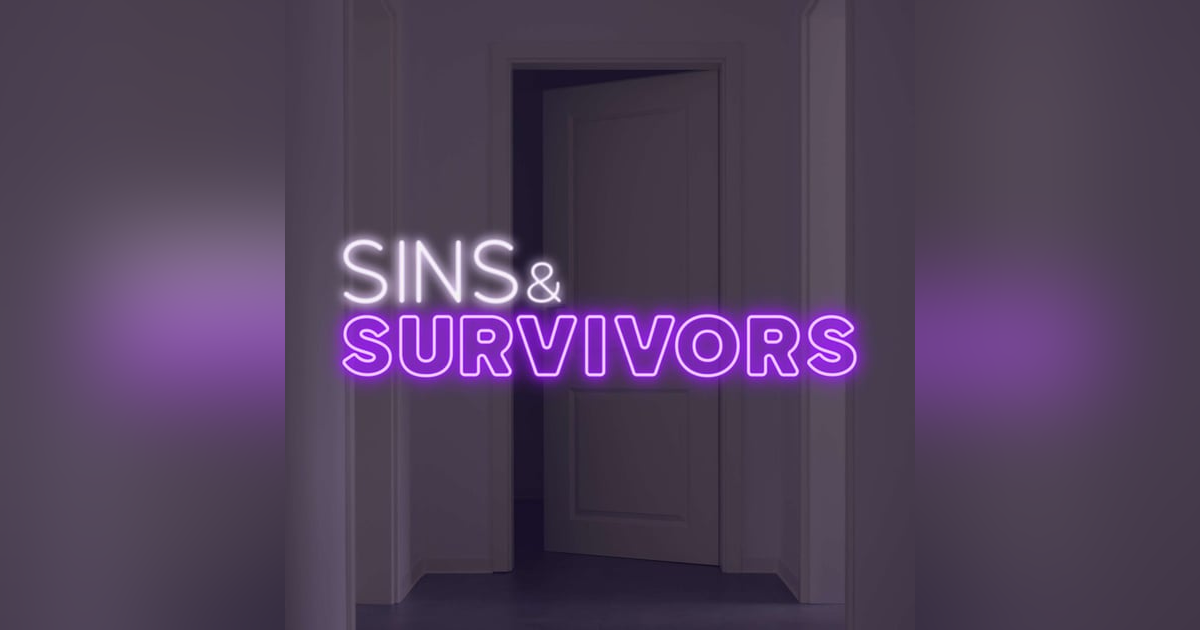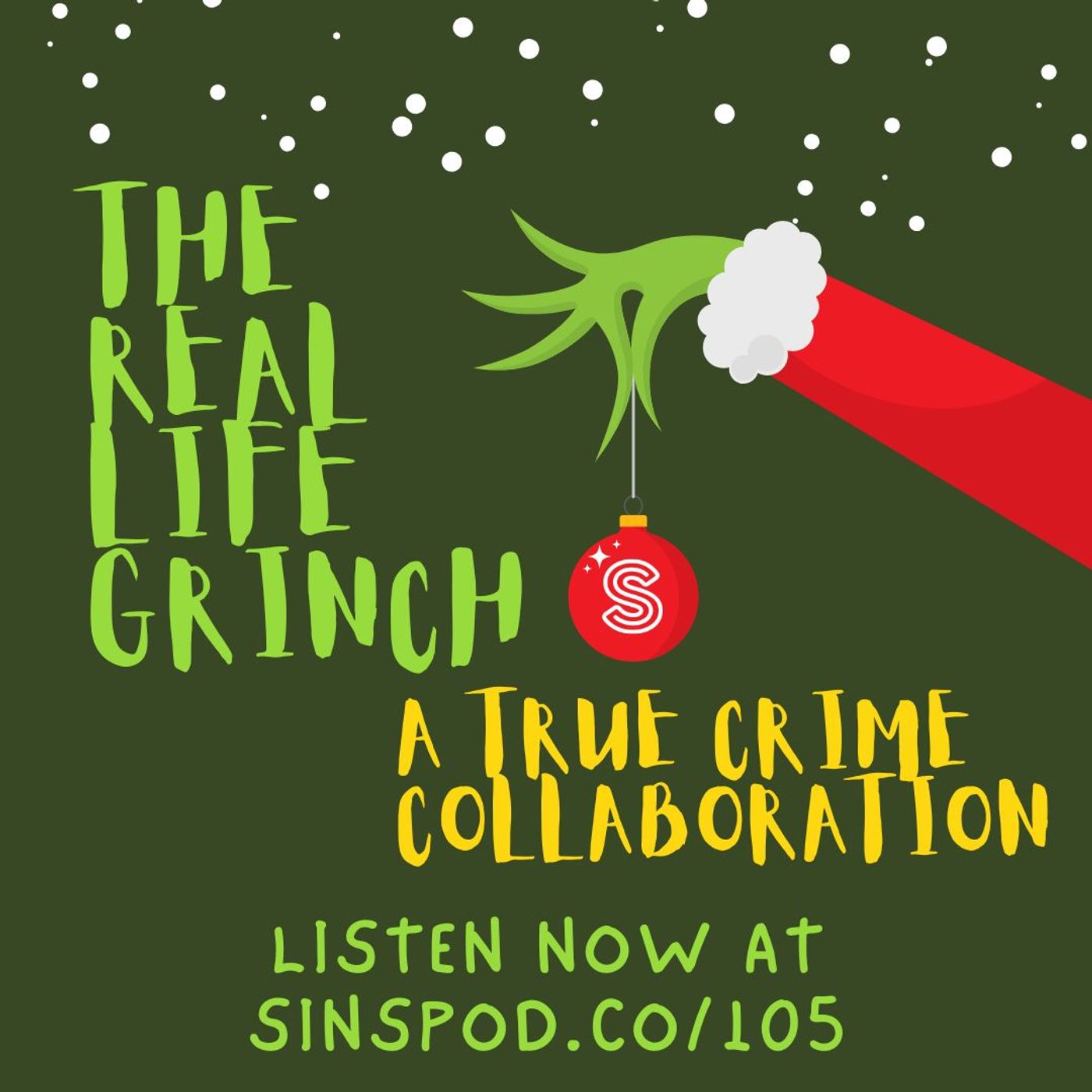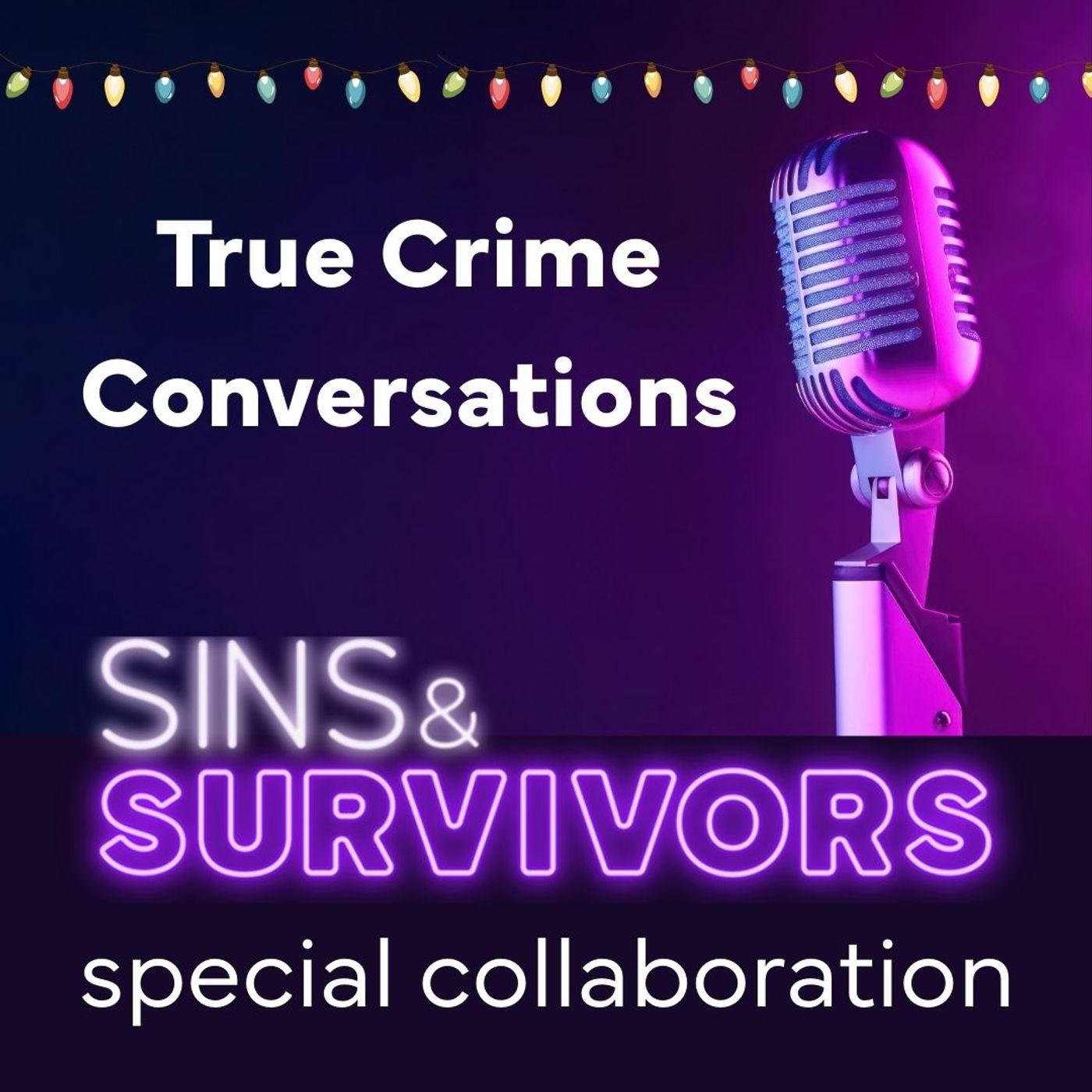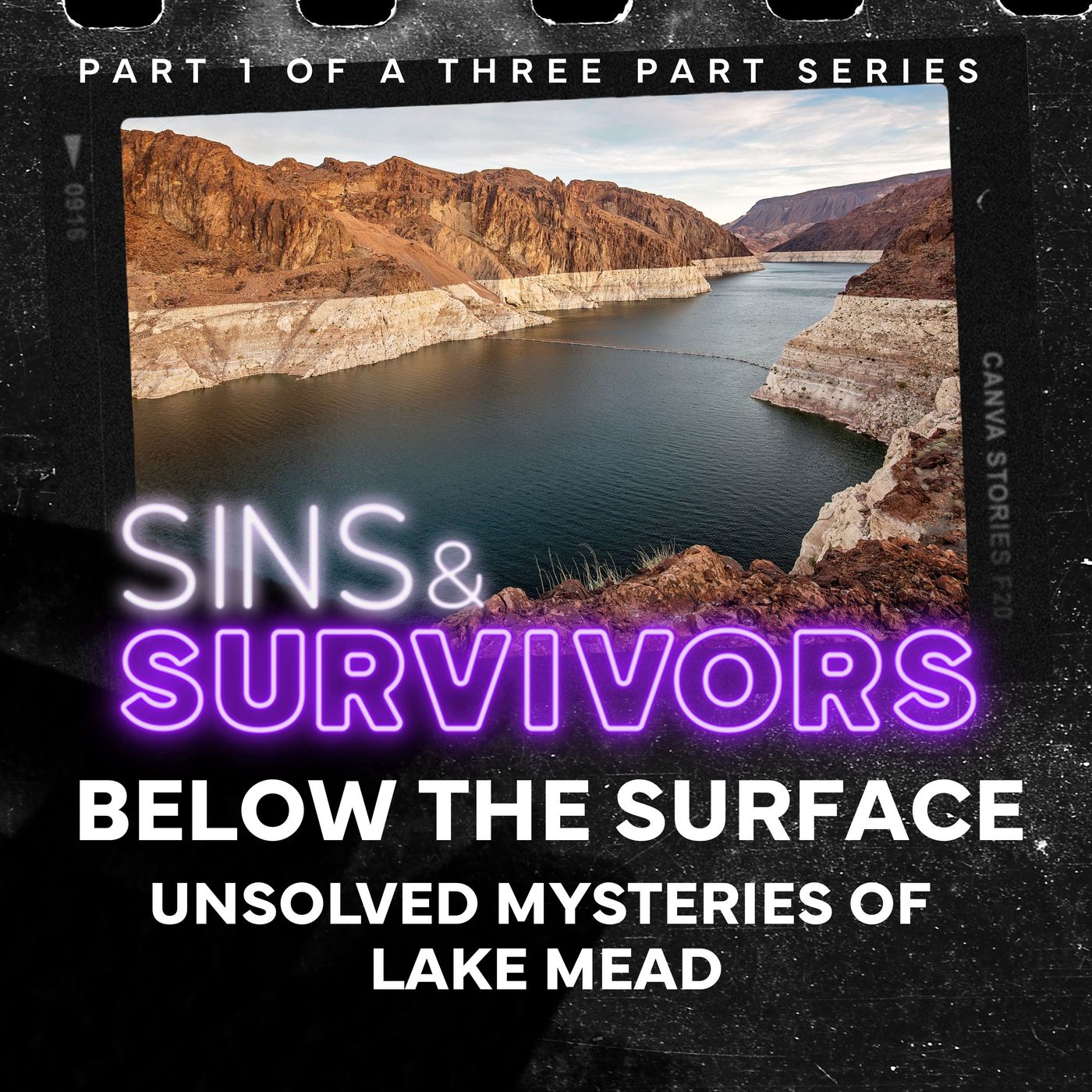Below The Surface - the Unsolved Mysteries of Lake Mead - Part 1

In the summer of 2022, Lake Mead dropped to its lowest levels in almost a century. The shoreline crept back. Boats that had been swallowed years ago sat beached in the sand like ghosts. But that wasn't all the lake revealed.
Lake Mead has long been a getaway for families, boaters, and hikers. But it’s also one of the deadliest national parks in the country. People vanish. Accidents happen. But every so often, the lake gives up a secret.
https://sinspod.co/85
https://sinspod.co/85blog
https://sinspod.co/85sources
Domestic Violence Resources
http://sinspod.co/resources
Click here to become a member of our Patreon!
https://sinspod.co/patreon
Visit and join our Patreon now and access our ad-free episodes and exclusive bonus content & schwag! Get ad-free access for only $1 a month or ad-free and bonus episodes for $3 a month
Apple Podcast Subscriptions
https://sinspod.co/apple
We're now offering premium membership benefits on Apple Podcast Subscriptions! On your mobile device
Let us know what you think about the episode
https://www.buzzsprout.com/twilio/text_messages/2248640/open_sms
Become a supporter of this podcast: https://www.spreaker.com/podcast/sins-survivors-a-las-vegas-true-crime-podcast--6173686/support.
Episode # 85 - Below the Surface: Unsolved Mysteries of Lake Mead Part 1
[Shaun]
In the summer of 2022, Lake Mead dropped to its lowest levels in almost a century. The shoreline crept back. Boats that had been swallowed years ago sat beached in the sand like ghosts. But that wasn't all the lake revealed.
[John]
Lake Mead has long been a getaway for families, boaters, and hikers. But it’s also one of the deadliest national parks in the country. People vanish. Accidents happen. But every so often, the lake gives up a secret.
(Music - Pause for 8 seconds)
[Shaun]
Hi, and welcome to Sins and Survivors, a Las Vegas true crime podcast, where we focus on cases that deal with domestic violence, as well as missing persons and unsolved cases. I’m your host, Shaun
[John]
And I’m your co-host, John
[Shaun]
Today’s episode is part one of a three-part series about Lake Mead, and the stories it has kept hidden beneath the surface for far too long.
Summer has arrived here in Las Vegas, and people are heading out on various road trips and vacations, and Lake Mead is a top destination year-round in our area and for the southwest in general.
Lake Mead straddles the border between southeastern Nevada and northwestern Arizona. It’s just a short drive from Las Vegas; it’s about 45 minutes from the Bellagio Fountains to the Lake Mead recreational area. It was formed by the construction of the Hoover Dam on the Colorado River in the 1930s.
At full capacity, the lake stretches about 112 miles long, covers over 150,000 acres, and can hold nearly 10 trillion gallons of water, though it's been far from full in recent years.
With over 750 miles of shoreline, it’s a popular spot for boating, fishing, and swimming. But it also has deep, dark pockets that are hard to search and easy to disappear into.
[John]
We wanted to put together this series ever since some of the cases the lake has kept hidden beneath the surface started making national headlines.
When we started our research, we weren’t sure if we had a bias since we live so close to the Lake and the local news makes it seem like it’s overly dangerous.
Were the stories that had come to light recently just making it seem like we were living very close to a major hazard?
It turns out that it's true, Lake Mead is one of the most dangerous national parks in America. From 2006 to 2016, at least 254 people died in or around the lake.
Most of those deaths were drownings or car accidents, and that number doesn’t include suicides, which are tracked separately. Lake Mead also had the most murders of any National Park during that time, with 6 murders in the park during that decade.
Keep in mind that the National Park Service also says it’s one of the most visited parks in the country, with nearly 6 million people visiting in 2023 alone, so of course, more people equals more opportunity for crashes or accidents, but the sheer size of the lake, the extreme heat, and the lack of cell service in many areas make it a risky place to visit.
[Shaun]
In one weekend alone in June of 2023, six people died at Lake Mead. A multiple-car accident killed three people, two drowned, and one died by suicide, while the park rangers rescued an additional 23 people that weekend. I feel like we can’t overstate how dangerous the lake is, and I know some of the locals who are listening right now probably have a story of something scary that happened to them or someone they know.
Everyone sees a lot of warnings during the summertime, the reminders to wear your life jacket, to take ample water on your hikes and let folks know where you’re going before you go, don’t drink and drive or drink and jetski, but honestly, when it comes to Lake Mead, you can’t be too careful.
For much of the country and the world, the dangers of Lake Mead became impossible to ignore in 2022, when extreme drought caused water levels to drop to their lowest point since the reservoir was first filled in the 1930s.
As the water receded, everything hidden beneath the lake was exposed, including junked cars and old boats, including a World War II landing craft, and sadly, human remains.
That summer, four sets of remains were discovered. Three were eventually identified as individuals who had drowned decades earlier, which brought some closure and answers to families who could finally lay their loved ones to rest.
But one body stood out immediately because he hadn’t drowned. He had quite obviously been murdered.
[John]
On May 1st, 2022, visitors near Hemenway Harbor saw a metal barrel exposed by the receding waterline. The barrel had rusted through, exposing its contents. Inside were the skeletal remains of a man. He had been shot and sealed in the barrel at least 30 years earlier.
He was wearing jeans, Trax brand tennis shoes, and a silver Timex watch. Forensic investigators estimated his height between 5' 6" and 6' 1" which is a very wide range. His shirt was size 2XL and his pants were a size 46” waist and 30” length. So he was likely on the shorter and larger side.
His jeans were light blue Vidal Sassoons and his sneakers were size 11. All his clothing was likely bought from Kmart in the 1970s.
The forensic investigators determined he was likely killed in the late 1970s or early 1980s. The FBI eventually created and released a 3D facial reconstruction of the man in hopes that someone might recognize him. Sadly, so far, no one has.
As we mentioned, he is the only one of the four sets of remains discovered in the summer of 2022 who has not been identified. Law enforcement hasn’t ruled out a mob connection, but there’s no confirmed link to organized crime.
You can view the FBI’s 3D image of this man on our social media, as well as photos of his clothes and watch. As always, we will post photos of all the known victims we’re covering, along with links to open cases.
Please take a moment to look at and share the information because someone out there might recognize him, and who knows, if whoever murdered him is still out there, maybe we can eventually bring them to justice as well.
[Shaun]
It’s hard to imagine that someone who likely died before I was even born had been hidden under the lake for all that time. Someone cared about him once, and it’s possible someone still does, so please take a look at those photos and share them.
When I was researching this episode, I discovered that the Hemenway Harbor Doe has some elements that are similar to an unsolved Lake Mead murder from the 1990s, and there is a woman in Tennessee who has been waiting her whole life for answers and justice.
Back in August of 1994, two fishermen were out near the Las Vegas Boat Harbor in the early morning when they found the body of a man floating in the water. The man had been shot several times and was tied to a 20-gallon galvanized trash barrel with a long cord, possibly in a failed attempt to keep him submerged.
Police later identified the victim as 34-year-old Christopher Scott Huffman. Chris had grown up in Henderson, Nevada. He worked in the casinos in Las Vegas. He had a family—a wife named Lynn and a young daughter, and at the time of his murder, Lynn was just a week away from giving birth to their second child.
Chris’s father, Bob Huffman, was well-known in nearby Pahrump, Nevada, where he owned the Saddle West Resort and served on the town board.
Chris’s life hadn’t been perfect. He’d had some brushes with the law, and once Chris was identified, that’s all the Review Journal focused on - his criminal record and not his life, not the people who loved him, possibly as an attempt to explain away what had happened to him. The reporting in the RJ barely mentioned his wife and didn’t mention his children or his parents at all.
[John]
Chris’s daughter, Christine, his namesake, was born just eleven days after he was killed. She never got to meet her father, but when the drought started to uncover remains in Lake Mead, she spoke out to the press in Clarksville, Tennessee, where she lives.
Christine was hoping that when the John Doe and other remains were found in 2022, new information might also surface related to her father’s murder and finally get her family some answers.
She was also very frustrated with how Chris’s death was treated in the press and how more hasn't been done for all the victims at Lake Mead.
She said “It’s not right that they just didn’t care about every person they find at the bottom of that lake,” she said. “Nobody cared. Nobody was looking for them, and nobody wanted answers for their families.”
Christine said she’d come to terms with the fact that it’s not likely her father’s killer is out there anywhere anymore, but she still shares her father's story, hoping someone will come forward, and she believes strongly that all the victims in Lake Mead need to be treated with respect and have their cases treated properly by law enforcement. All families deserve answers.
Chris’s case remains unsolved and is listed as an open homicide on Metro’s website. Over thirty years later, his daughters are still hoping someone will speak up.
We’ll be sharing photos of Chris on our social media as well, in the hope that someone eventually comes forward with information. Christine’s family has had to live with the silence for decades.
[Shaun]
One of the cases we have to share with you this week is actually a story where, for once, John and I don’t feel that the links to organized crime are just rumors or Vegas urban legends.
On Wednesday, April 2, 1980, a Nellis Air Force Base serviceman and his friend were hiking near North Shore Road, which is appropriately named as it runs along the north shore of Lake Mead. This is, like most of the area around Lake Mead, a very remote area.
They noticed a car, several hundred feet off the road, stuck in a 25-foot ravine. They checked the car to see if anyone was hurt or needed assistance, but found the car was empty.
They located the registration information and found the car was registered to a man named Nicholas Costanza. They tried to call him to let him know where his car was, but they were unable to reach him. Instead, they spoke to his father, Nicholas Costanza, Senior, who said that he didn’t know where his son was or why his car was in that ravine.
Two days later, on Friday April 4th, the friends were hiking along that same road, and the car was still there. It had been bashed up and looted. The two friends were curious about the car and they decided to search it as well.
As they peered inside the ransacked Oldsmobile Cutlass, they made a haunting discovery. In the trunk was the body of 27-year-old Nicholas Anthony Costanza Jr., whose friends and family called Nicky.
[John]
Nicky Costanza had been shot in the back. His car, reportedly a 1977 or 1978 Oldsmobile Cutlass, had clearly been in some kind of accident. He’d been missing since March 30th, and it was determined he’d been dead for at least two or three days.
Born on June 20, 1952, in Newark, New Jersey, and he moved to Las Vegas with his family and lived here for 25 years. He worked as a dealer at the Tropicana, and on the surface, he seemed like just another young man making a living, but more on that in a bit.
The homicide division of the Las Vegas Metropolitan Police Department opened an investigation; however, no arrests were ever made, and more than 45 years later, the case is still cold.
When you begin to look into Nicky’s family and the world around him, however, the waters muddy quickly.
[Shaun]
Nicholas Costanza, Sr. owned a restaurant called Nicholas’ Little Italy, and it was later said that he moved his family from Newark in the hopes of starting his own organized crime family.
He was reportedly a longtime associate of reputed mobster Anthony Spilotro, with ties to organized crime, and, according to federal prosecutors, was “intimately associated” with illegal activity including drug distribution, counterfeiting, and bookmaking.
How close were the Costanzas linked to organized crime? Well, Nicholas’s daughter - Nicky’s sister, Elaine, married mob informant Frank Cullotta.
Frank Cullotta was a former mobster and hitman who operated in Las Vegas as part of the Chicago Outfit’s infamous “Hole in the Wall Gang,” a burglary crew known for high-profile break-ins during the late 1970s and early 1980s.
Both Cullotta and Spilotro were later portrayed in Martin Scorsese’s 1995 film Casino: Joe Pesci’s character, Nicky Santoro, was based on Spilotro, and Frank Vincent’s character, Frank Marino, was based on Cullotta. Cullotta served as a technical advisor for the film and even appeared in a small role, helping ensure its gritty portrayal of organized crime was as accurate as possible.
Nicky’s brother, Jerry, was also arrested multiple times, further supporting the theories that the Costanzas were entangled in the criminal underbelly of 1980s Las Vegas.
According to Nicholas Senior’s ex-wife however, Nicholas Senior “was not capable of organizing a bowling team.”
[John]
2 years after Nicky’s murder, his father and brother were both arrested on drug charges when an associate of theirs, Frank Scungio, became an undercover informant for the FBI.
Scungio had been caught in a massive undercover FBI sting operation called Jewel Pigeon and had agreed to cooperate with the feds and wear a wire.
Nicky’s father claimed that he was only buying drugs from Scungio to try to gain information about his son’s murder. The two of them had worked together at the Tropicana, and he was trying to gain his trust.
But unsurprisingly, prosecutors didn’t believe him. Both Jerry and Nicholas Sr. eventually pleaded guilty to multiple counts of cocaine distribution.
Nicky’s murder is unsolved, and given the strong culture of silence around organized crime, we may never know what happened to him.
Nicholas Sr. openly complained that investigators had “washed their hands of it,” and suggested that they didn’t care because the family was Italian.
Whatever the truth, it’s clear that Nicky Costanza lived and died in a time when Las Vegas was shaped by corruption, connections, and calculated silence.
His life was cut short by a single gunshot. His body, hidden in the trunk of his own car, was likely a final message.
But what that message meant—and who sent it—is still unknown.
[Shaun]
The final case we have for this episode is a domestic violence homicide where the alleged killer vanished somewhere on Lake Mead.
On the evening of September 7th, 1997, police responded to a call from a quiet neighborhood in Las Vegas. Inside a home near Jones and Spring Valley, they found two people shot to death. The victims were 59-year-old Jeanette Rowe and her 33-year-old son, Bradley Schweitzer. Jeanette worked as a nurse at UMC, and it was reported that Bradley had been struggling with drug use. According to investigators, what happened was that a family argument had turned deadly.
Jeanette had been in the kitchen preparing dinner when her husband, Robert Rowe, confronted Bradley about his drug use. He got in his face, and shot him with his 9mm handgun. When Jeanette tried to intervene, he then shot her.
Robert’s 16-year-old daughter fled to a neighbor’s home for help.
When the police arrived, the stove was still on, and the officers turned off the gas to prevent a fire, but they couldn’t legally search the house right away. They had to wait nearly an hour for a warrant. During that time, Robert Rowe vanished. He was last seen pulling out of the driveway in his tan pickup truck.
They found Bradley deceased in a chair in the living room, and Jeanette was found dead in the kitchen.
[John]
Two days later, Robert’s truck was found abandoned at Lake Mead. Detectives discovered that his sailboat, normally docked at the marina, was missing.
That set off an intense search involving park rangers and aerial surveillance. On September 10th, a ranger spotted the sailboat drifting aimlessly on the Arizona side of the lake in a spot called Rattlesnake Cove. The sails were down, the rudder was missing, and Robert was nowhere to be found.
Homicide Sergeant Bill Keeton told reporters, “He’s either dead out there or he’s trying to lead us to believe that he’s dead.” The location was remote, hard to get to on foot, and the boat had clearly been left adrift. But was it a staged suicide or an actual one?
At the time, police were unsure. Sergeant Kevin Manning said, “Did he kill himself or did he swim away? We don’t know and we have almost no way of reasonably finding out.”
“To me, if he was taking his own life, it’s about the cruelst thing he could do because his daughter and the rest of the family may never know for sure. For us, the case will be open forever.”
Decades later, Robert Rowe remains missing, and the case remains unsolved. As John L Smith wrote, “It’s a mystery as deep as the lake itself.”
Cases like these remind us that while Lake Mead is a popular destination for boating and camping, it's also a final resting place for some and a hiding place for others. The shrinking shoreline continues to reveal more than just debris. It reveals lives interrupted, families devastated, and crimes that still don’t have answers.
[Shaun]
We’ll be back next week with Part Two of our Lake Mead series, where we’ll look at more missing persons, unsolved mysteries, and families still searching for answers.
But for now, if you have any information about the Hemenway Harbor Doe, the murder of Christopher Scott Huffman or Nicky Constanza, or the disappearance of Robert Rowe, please contact Crime Stoppers of Nevada at (702) 385-5555 or visit crimestoppersofnv.com. Tips can remain anonymous. And please check our Instagram, Facebook, or website for photos and case summaries. Share them. Talk about them. You never know who might hold the missing piece.
Because someone always knows something. And justice doesn’t disappear just because the evidence was underwater.
Thank you for listening and remember what happens here happens everywhere.







